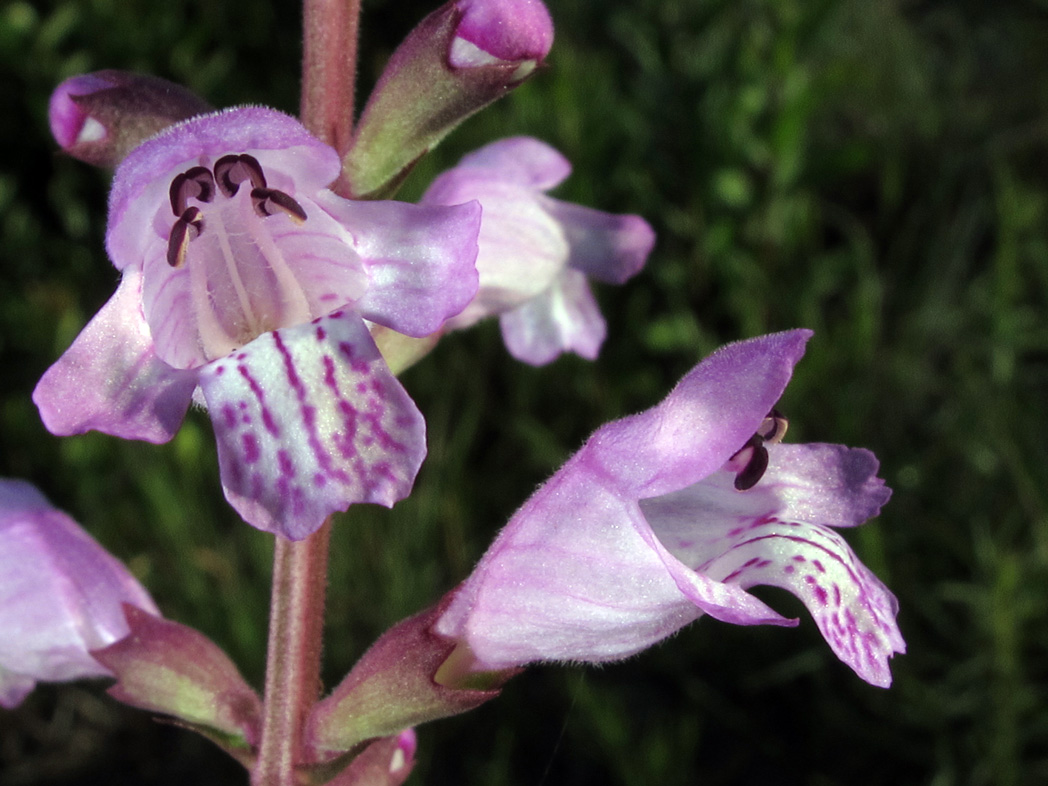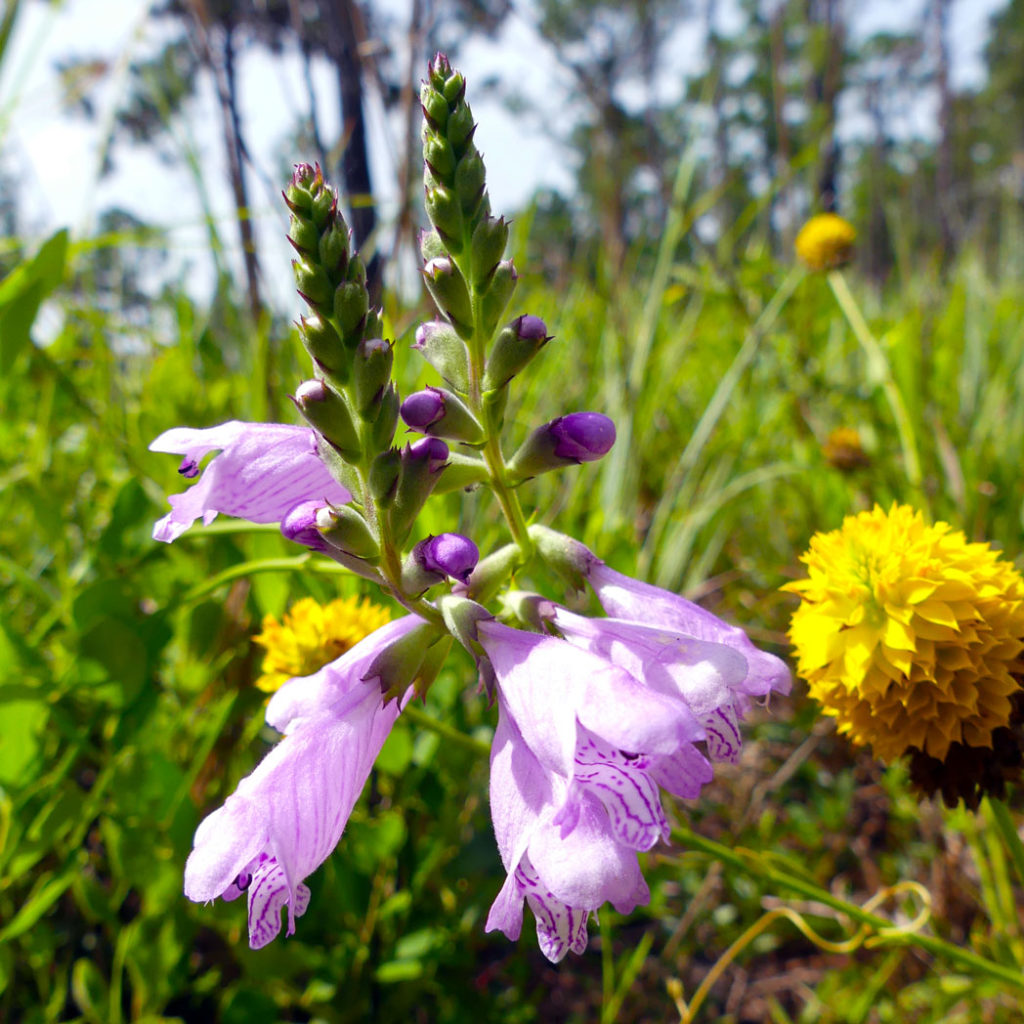Eastern false dragonhead
Pictured above: Eastern false dragonhead (Physostegia purpurea) blooming among Yellow milkwort (Polygala rugelii). Photo taken at Savage/Christmas Creek Preserve in Orange County by Stacey Matrazzo. Click on terms for botanical definitions. View post as a PDF
Eastern false dragonhead is an herbaceous perennial wildflower found in moist to wet pinelands and marsh and swamp edges throughout much of Florida. It blooms late spring through early fall and is especially attractive to bees, although butterflies and the occasional hummingbird are known to visit it. The seeds are eaten by birds.
Flowers are tubular, two-lipped and may be pink, lavender or purple. The lower lip is three-lobed. The center lobe and throat are marked with dark spots or streaks. Stamens number four with noticeably dark anthers. Flowers are born in opposite pairs along terminal racemes. Calyces are five-lobed and lightly pubescent with a purple tinge. Leaves are lanceolate, may be sessile or petiolate, and have toothed, lobed or undulating margins. They are oppositely arranged and diminish in size as they ascend the stem. Stems are square, smooth and may have a purple tinge. Seeds are born in small nutlets.

Bloom showing dark anthers and streaked center lobe and throat. Photo by Alan Cressler, Lady Bird Johnson Wildflower Center
Members of the Physostegia genus were once placed in the Dracocephalum genus, from which the common name “dragonhead” is derived. Collectively, they are sometimes referred to as “obedient plants” because the flowers’ orientation on the stem can be manipulated. (In the nursery trade, Obedient plant generally refers to the non-native Physostegia virginiana.)
Family: Lamiaceae (Mint family)
Native range: Nearly throughout
To see where natural populations of Eastern false dragonhead have been vouchered, visit florida.plantatlas.usf.edu.
Hardiness: Zones 8A–10B
Lifespan: Perennial
Soil: Moist, well-drained sandy soils
Exposure: Full sun to partial shade
Growth habit: 2–3+’ tall
Propagation: Seed
Garden tips: Eastern false dragonhead is suitable for moist to wet gardens and naturalistic landscapes. It spreads by way of underground rhizomes and may form small colonies. It does not tolerate extended periods of drought. The plant is short-lived and will die back in winter.
Plants are occasionally available at nurseries that specialize in native plants. Visit PlantRealFlorida.org to find a native nursery in your area.

